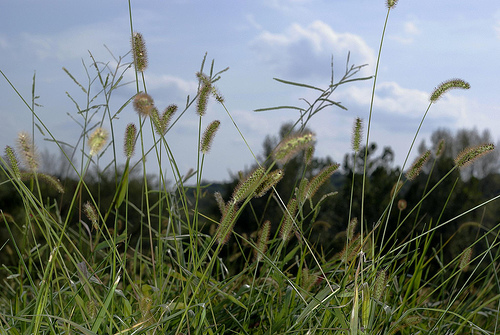In the mountains, the beauty is obvious. Any idiot can see it. To appreciate a prairie, you have to slow down, turn over rocks and consider subtleties. It helps if you value skinks and beetles, white-tailed deer, red-tailed hawks and flowers in more colors than a box of kindergartner's crayons.
Maybe the sharpness that's required to really see this ecosystems is why nearly 99 percent of North America's native prairie has gone the way of the dodo bird.
Luckily, there's a 40-acre prairie in metro Kansas City that has not only managed to survive, but has attracted its own groupies, fans dedicated to appreciating and protecting it. Kansas City WildLands, a consortium of conservation agencies and volunteers, serves as the bodyguard for this endangered prairie set smack in the middle of 160-acre Jerry Smith Park.

"Far as I'm concerned, saving the prairie is a moral issue. We've so altered the landscape that many plant and animal species have disappeared. I believe we have an obligation to preserve and protect what's left," says Larry Rizzo, the Missouri Department of Conservation biologist who first recognized the unique specimen within the city limits. "Even a small piece of prairie can contain as many as 200 different species. To give you a comparison, a plowed farm field might have a couple dozen. It's ironic we give South America a hard time for destroying its rainforest when we've practically lost an entire ecosystem right here."
Since 1997 when Rizzo began enlisting support, the endangered prairie has come back with a showy vengeance. Volunteers, during public work days, remove woody brush once controlled by herds of thundering bison. Prescribed burns emulate lightning strikes that, before fire trucks, insured renewal and diversity. A WildLands Seed Team collects and catalogs plants with names like blazing star, orange puccoon, squaw weed and eared false foxglove. Most importantly, Rizzo and his merry band of prairie supporters persuaded the city that undeveloped wildlands are an important component of any city park system.
"It's officially protected," says Linda Lehrbaum, WildLands Program Manager. "I'm happy to report that this is one prairie that will never be turned into a golf course."